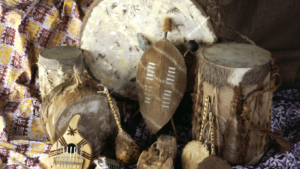African instrumental music is a vibrant tapestry of sounds and rhythms that echo the continent’s rich cultural heritage. From the resonant beats of the djembe to the melodic tones of the kora, these instruments tell stories of tradition, community, and history. Each region boasts its own unique musical styles, reflecting the diversity and depth of African cultures.
This music isn’t just about entertainment; it’s a vital part of ceremonies, storytelling, and social gatherings. Instruments often serve as a bridge between the past and present, connecting generations through shared musical experiences. As global interest in world music grows, African instrumental music continues to captivate audiences with its authenticity and soul-stirring power.
African Instrumental Music

African instrumental music encompasses a variety of styles and genres, each embodying the unique characteristics of different regions. Its musical landscape is as diverse as the continent itself. Instruments play a crucial role in creating intricate rhythms and melodies that define African music. Styles like griot storytelling in West Africa and drum ensembles in Central Africa showcase rhythmic complexity.
Traditional instruments form the backbone of this music, with percussion instruments being especially prominent. The djembe is renowned for its versatility, used in both ceremonial and recreational settings. The kora, a 21-string lute-bridge-harp, connects to West African history and culture, delivering both melodic and narrative content.
Traditional African Instruments
Traditional African instruments shape the diverse soundscapes of the continent. These instruments encompass various categories, each contributing unique timbres and playing techniques.
Percussion Instruments
Percussion instruments form the backbone of African music. The djembe, a goblet-shaped drum, creates dynamic sounds through hand techniques. Originating from West Africa, the talking drum mimics human speech patterns. Used in festivals and rituals, the mbira consists of metal tines plucked with thumbs, producing melodic tones. Central African drum ensembles incite communal participation and convey social messages.
String Instruments
String instruments provide melodic depth to African music. The kora, a 21-string harp-lute, fuses storytelling with music. It plays a pivotal role in griot traditions, passing down historical narratives. West African xylophone variations like the balafon feature resonant wooden bars. The endongo, a Ugandan bowl lyre, supports vocal accompaniment in cultural ceremonies.
Wind Instruments
Wind instruments add expressive nuances to traditional music. The algaita, an oboe-like instrument, emits haunting tones and is used in ceremonial occasions. The kudu horn, crafted from antelope horns, offers deep, resonant sounds associated with hunting rituals. Flutes, made from bamboo or reeds, enhance melodies and often accompany dance performances across Africa.
Influence of African Instrumental Music on Global Music
 African instrumental music has profoundly shaped global music, evident in its rhythms and melodies that transcend borders. Many contemporary music genres, including jazz, blues, and hip-hop, draw inspiration from African musical elements. African rhythms have become foundational in genres like jazz, where syncopation and complex polyrhythms mirror traditional drumming patterns.
African instrumental music has profoundly shaped global music, evident in its rhythms and melodies that transcend borders. Many contemporary music genres, including jazz, blues, and hip-hop, draw inspiration from African musical elements. African rhythms have become foundational in genres like jazz, where syncopation and complex polyrhythms mirror traditional drumming patterns.
In blues music, the influence of African musical structures is apparent through call-and-response patterns and the use of specific scales that reflect those in African traditions. Hip-hop, too, integrates African beats and rhythms, reflecting a deep connection to African music through sampling and rhythmic complexity.
Prominent African Instrumental Musicians
 Prominent figures in African instrumental music have played pivotal roles in shaping its evolution. Their contributions over centuries bridge traditional and contemporary styles, showcasing the depth and diversity of African musical artistry.
Prominent figures in African instrumental music have played pivotal roles in shaping its evolution. Their contributions over centuries bridge traditional and contemporary styles, showcasing the depth and diversity of African musical artistry.
Historical musicians have embedded African instrumental sounds in cultural narratives. Sundiata Keita, the legendary king of the Mali Empire, patronized griots who used instruments like the kora. These griots were essential in preserving oral history through music. Tiganá, a griot of Mandinka origin, also played a crucial role, immortalizing historical events and social values through melodic storytelling with the balafon.
Contemporary Artists
Contemporary artists blend traditional African sounds with modern influences. Toumani Diabaté, a Malian kora maestro, has gained international acclaim for his virtuosic performances and collaborations, infusing traditional melodies with world music genres. Miriam Makeba, though primarily known for her vocal work, incorporated African instrumental sounds into her performances, enhancing the global appreciation of African music.

